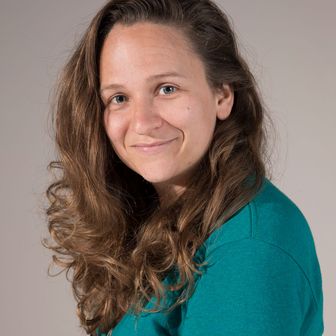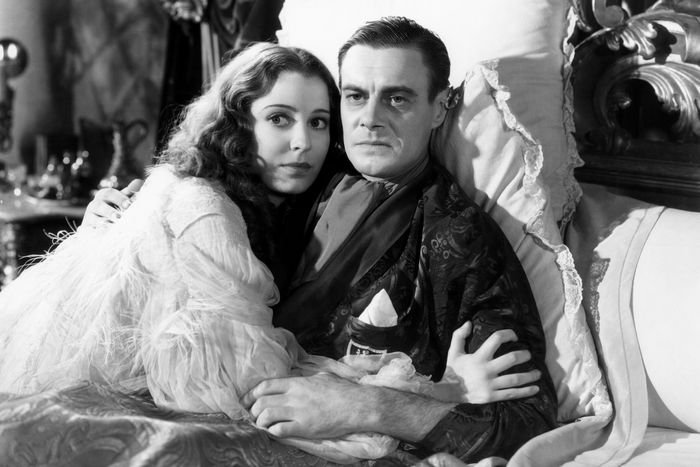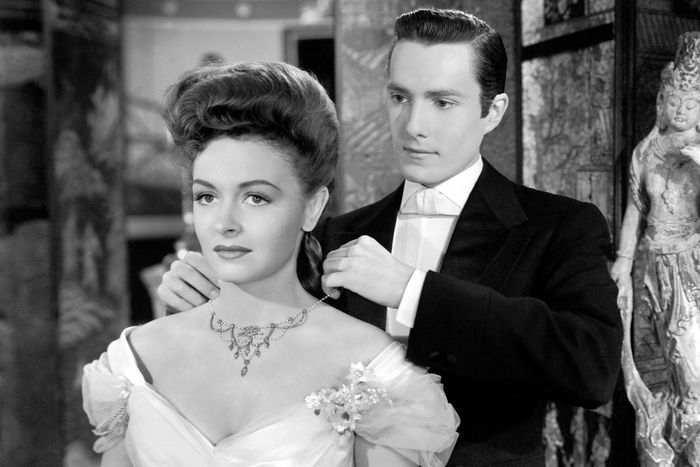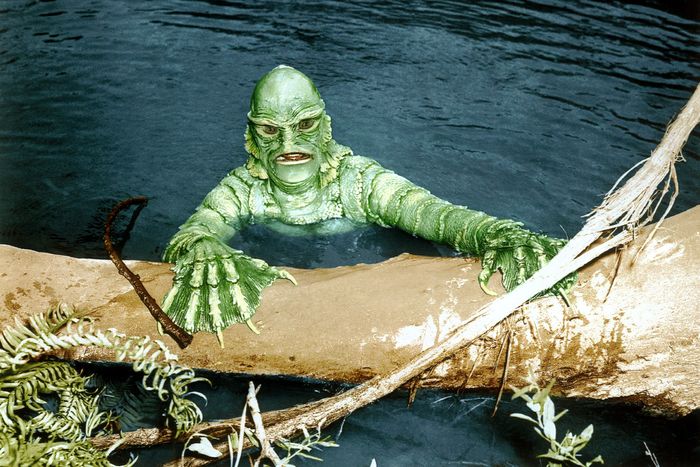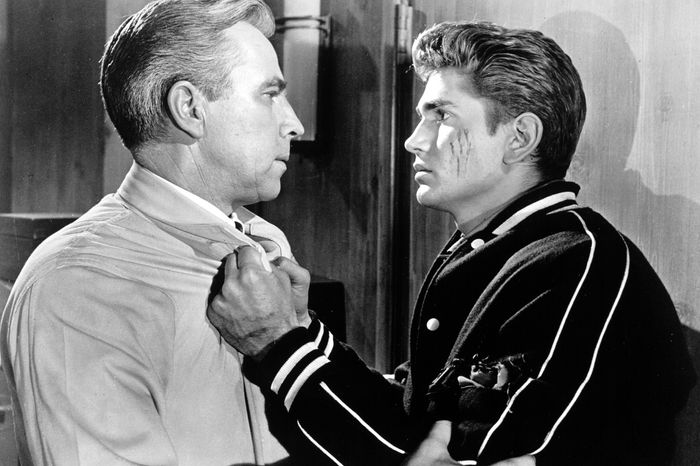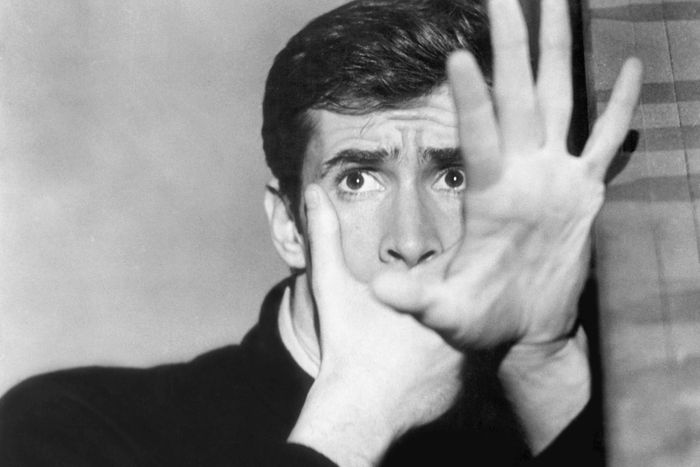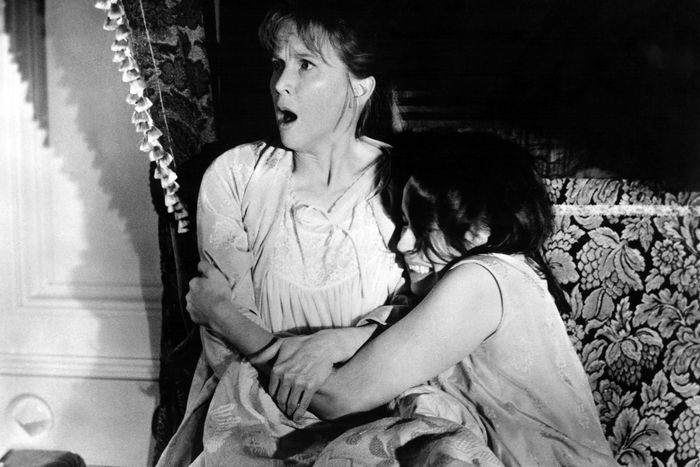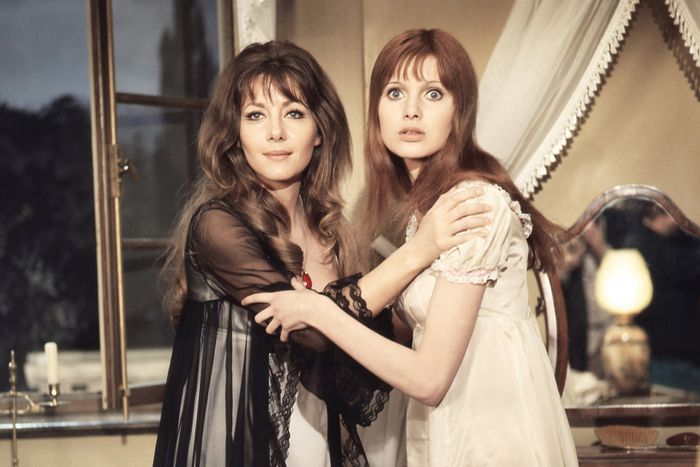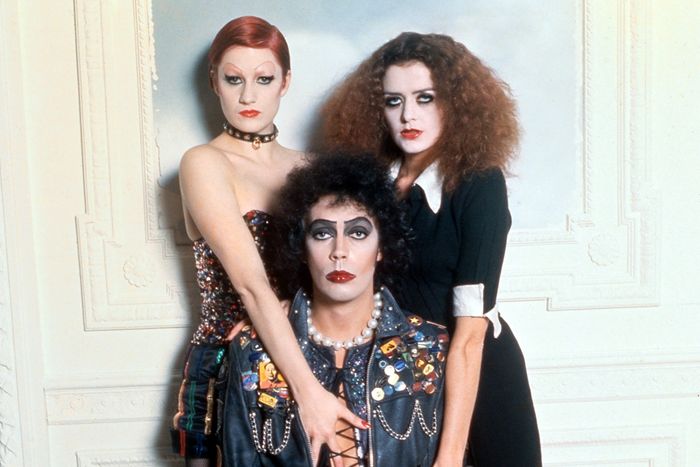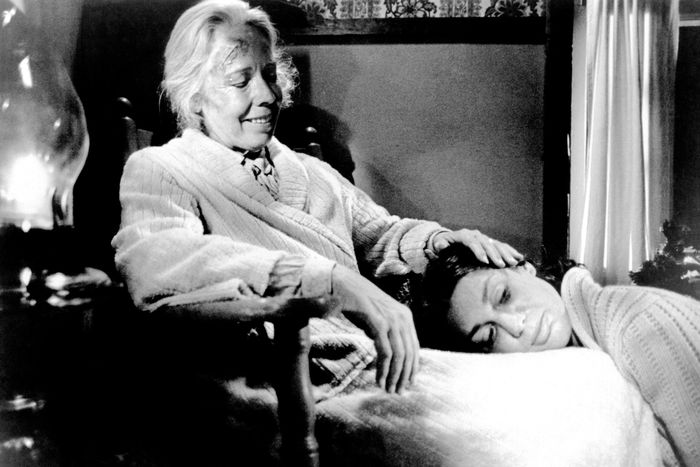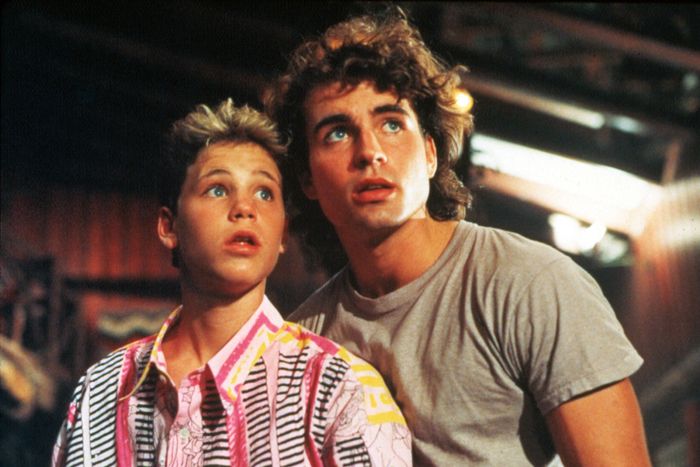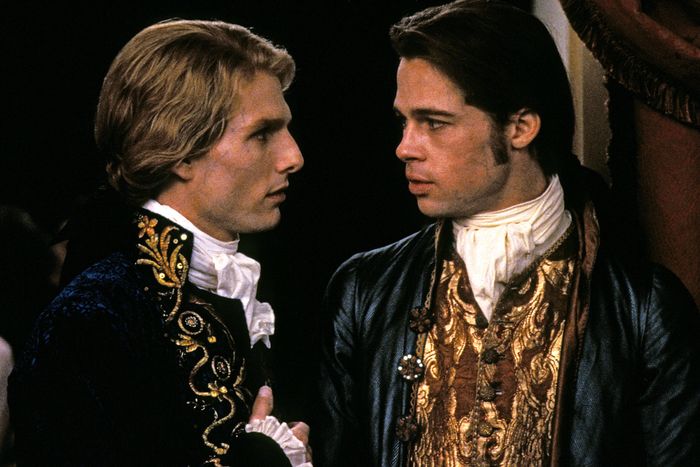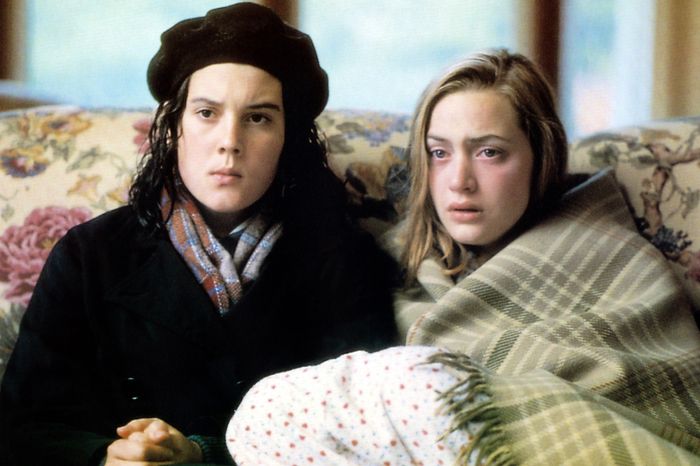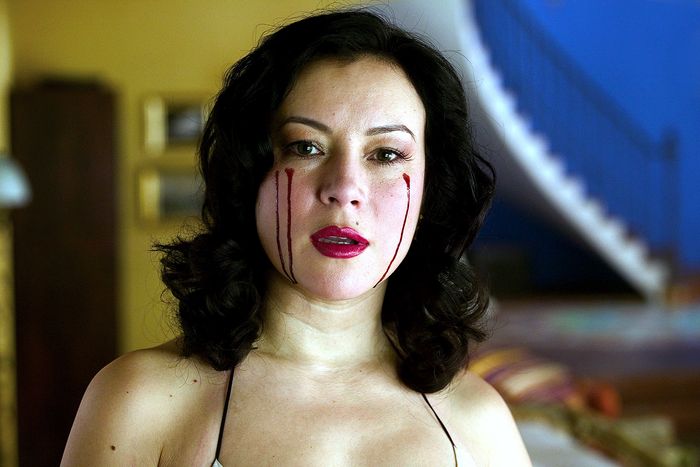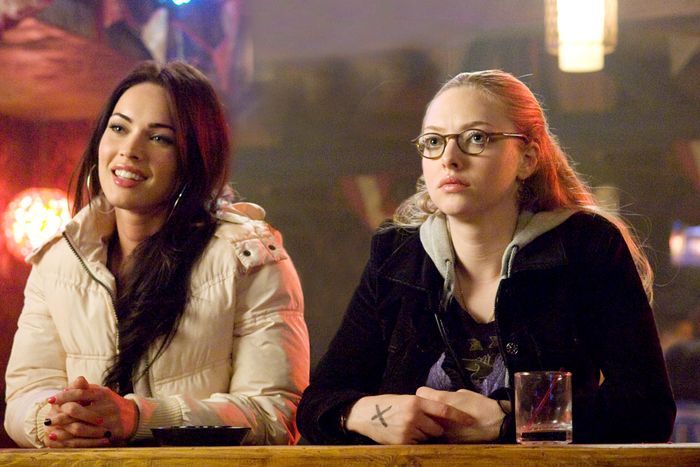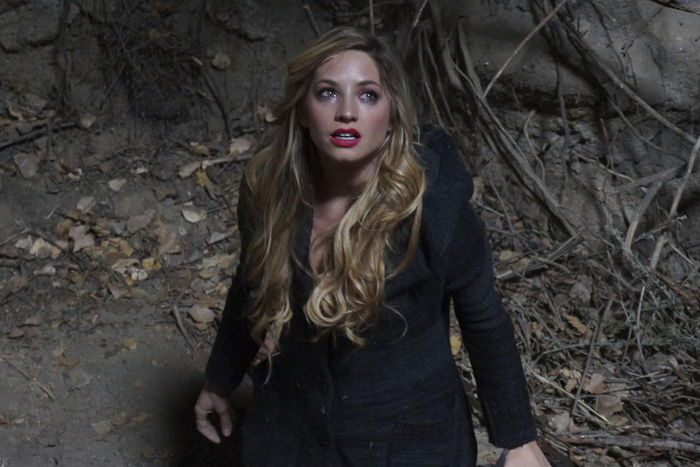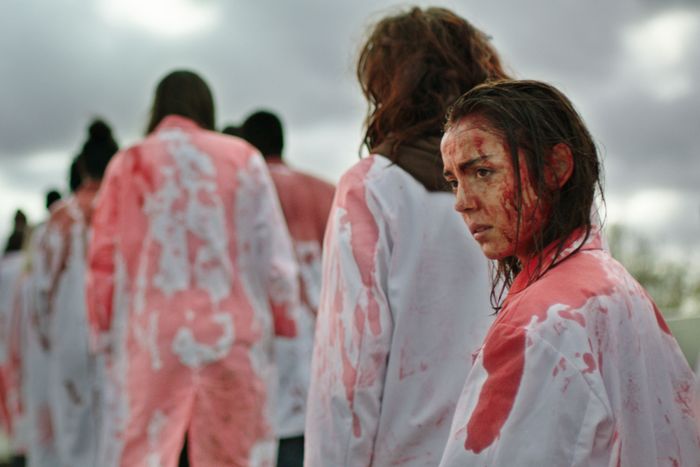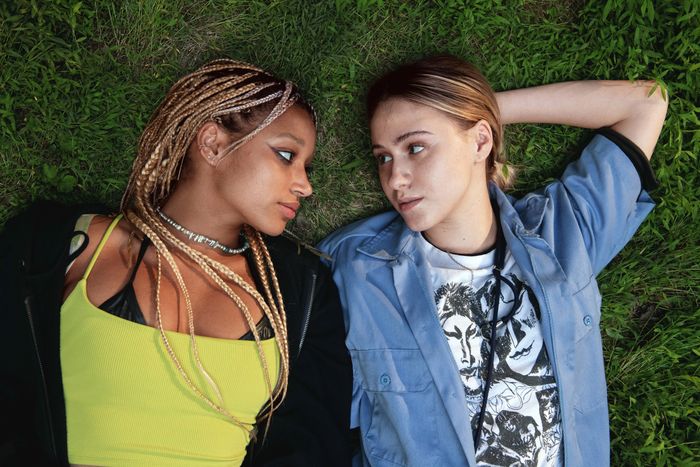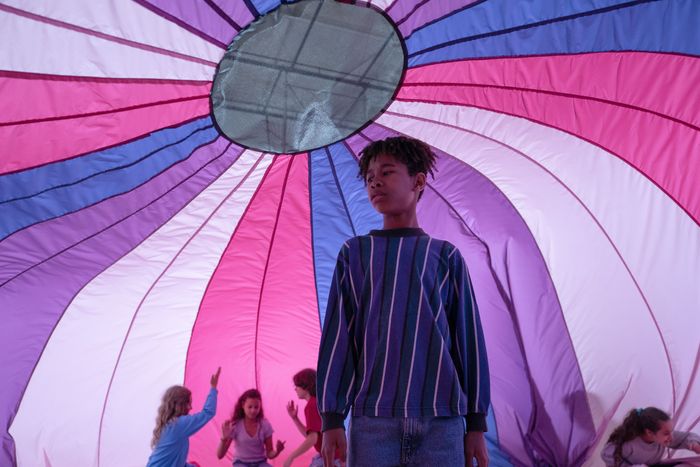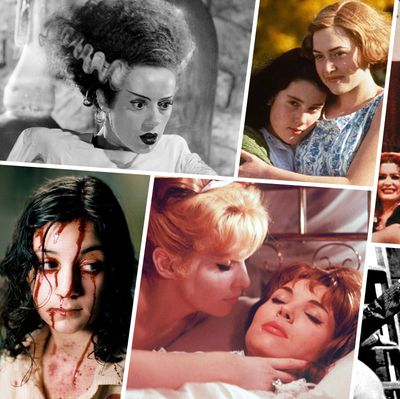
This article was originally published on June 25, 2018. It has been updated with additional films.
From 1934 until 1967, Hollywood movies were shaped by the Production Code, otherwise known as the Hays Code. Written in 1930, but not implemented until four years later, this set of rules was generally intended to keep movies from “corrupting” the people who watched them. Given that homosexuality was considered either a physical or psychological malady in the early 20th century, the code effectively legislated any limited queer presence out of existence. While homosexuality was not explicitly banned in the Hays’ text, it was mandated that “no picture shall be produced that will lower the moral standards of those who see it. Hence the sympathy of the audience should never be thrown to the side of crime, wrongdoing, evil or sin.” It was also codified that only “correct standards of life” should be presented,” and that “sex perversion or any inference to it is forbidden.”
In other words, for a long time, cinematic queers were pushed underground, relegated to existing only in subtext — and most often as villains. In order to get queer stories onscreen, filmmakers had to find creative ways to subvert the system.
Horror films in particular have made for a fascinating case study in the evolving perceptions of queer presence; queer-horror filmmakers and actors were often forced to lean into the trope of the “predatory queer” or the “monstrous queer” to claim some sense of power through visibility and blatant expressions of sexuality. Below is a beginner’s guide to the most essential queer horror of the past 90 years. It also doubles as a timeline of the evolution of queer horror: How LGBTQA themes and characters went from hiding between the lines in movies with “gay sensibilities” in the 1930s to breaking out as Pride memes almost a century later — going from invisible (lesbian ghosts!) to closeted (literally, in the case of Dorian Gray) to fabulously out (who wouldn’t have given in to Catherine Deneuve’s Miriam Blaylock?), before finally being allowed to exist as multidimensional characters onscreen.
From the coded abominations of James Whale’s taboo-skirting films of the 1930s to the Pride reign of The Babadook, here’s our guide to queer horror cinema.
The 1930s and 1940s — Fear the Queer Monsters
Queerness was codified as taboo when the Hays Code went into effect in 1934. But at the same time, the public was hungry for fantastical stories of monsters like Dracula, Frankenstein, the Wolfman, the Invisible Man, and so on — all of which are convenient avatars for the socially ostracized, the misunderstood, and the disenfranchised. As Harry M. Benshoff explains in his book Monsters in the Closet: Homosexuality in the Horror Film, “Immediately before and during the years of World War II, Universal Studio’s horror films began to employ a more humanistic depiction of their monsters,” and the films of Val Lewton, like Cat People, reflected “a growing awareness of homosexuality, homosexual communities, and the dynamics of homosexual oppression as it was played out in society and the military.” So even though Hollywood execs refused to show explicit queerness, during the first true horror boom in American cinema, they were willing to pay for stories about social outcasts and sexually nonnormative figures. Horror fans thus found themselves awash in some of the genre’s most iconic queer-coded characters of all time.
The Old Dark House (1932)
It should come as no surprise that a known gay director, James Whale, brought to life some of the most iconic Universal Monsters during their peak in the 1930s. Whale imbued his movies, often about the ultimate outsiders, with a gay sensibility: In Dark House, five people are brought together when they’re forced off the road by a storm and end up taking shelter in the same isolated home. Taboo topics like homosexual behavior, androgyny, and sexual deviance are all hinted at throughout the movie. Whale also cast the famously campy actor Ernest Thesiger to play one of the Femm siblings. This is an Ur-text for haunted-house cinema — and one of the gayest films of its decade.
The Bride of Frankenstein (1935)
Whale also directed a sequel to his hit Frankenstein, this time using the scheming Dr. Septimus Pretorius to entice Dr. Frankenstein (Colin Clive) back into his laboratory after the events of the first film. Through Thesiger’s high-camp portrayal, Pretorius plays as one of the most identifiably gay characters in an era where explicitly acknowledging that fact was banned. And ultimately, the monster himself ends up the selfless hero, which became something of a trope in early horror: As Benshoff writes in Monsters in the Closet, “Many eschewed the ‘normal’ couple all together and instead focused solely on their queer protagonists, suggesting, as will the horror films of later decades, that it is the monster queer whom the audience really comes to see and identify with, and not the heterosexual heroes and heroines.”
Dracula’s Daughter (1936)
Several decades before the lesbian-vampire boom of the 1970s, there was Dracula’s Daughter, centered on a character desperate to shed the disease of vampirism and live freely as a normal woman (meaning: under the thumb of a controlling man). The Countess Marya Zaleska (Gloria Holden) seduces her victims — of both genders — to drain them of their blood. She battles “horrible impulses” that she tries and fails to repress, and even starts seeing a psychiatrist to analyze the “vampire” out of her (a treatment that was thought to cure homosexuality, as well). Although she was yet another queer villain, she was more sympathetic to 1930s audiences due to her desire to be purged of what made her an Other.
Rebecca (1940)
Based on the novel by Daphne du Maurier and adapted by Alfred Hitchcock, Rebecca tells the story of a common-born girl who marries above her station and is forced to live in the larger-than-life shadow of her new man’s dead wife, Rebecca. Enter Mrs. Danvers, the head housekeeper, whose hatred for the new Mrs. De Winter is only surpassed by her obsession with the beautiful, mysterious Rebecca — and who obsessively picks through the dead woman’s intimates drawer and fondly recalls evenings when she would help the lady of the house undress after parties. Almost 80 years later, Mrs. Danvers remains one of the great coded queer icons of all time.
Cat People (1942)
Legendary producer Val Lewton brought forth Cat People, the story of a Serbian immigrant named Irena who must abstain from intimacy, lest she awaken the curse of her descendants, which doomed the women of her tribe to transform into murderous panthers should their desire be awakened. Irena meets and hastily marries an American man, but she fears giving into him physically; her reluctance is broadly read among critics to be coded, repressed lesbian desire. In addition to being an outsider in America with different customs and traditions, Irena is further alienated by her inability to consummate her heteronormative marriage.
The Uninvited (1944)
The concept of invisible queers went from figurative to literal in this haunted-house film, where the coded lesbian character is actually a full-on ghost! A brother and sister move into a seaside mansion haunted by a woman scornfully tethered to this mortal coil by a desire for vengeance and a connection to her implied lesbian lover. The relationship of the protagonist, Stella, with the mysterious ghost she thinks is her mother, begins as an infatuation that’s been interpreted as subtextually queer. “The heroine’s fascination is directly identified as love,” writes Patricia White in Uninvited: Classical Hollywood Cinema and Lesbian Representability, “But the condition of this unveiling is that the object of her attraction becomes literally her mother. The film thus dramatizes how the female oedipal narrative functions as a support for another story, a lesbian desire that is both evoked and covered over.” A classic tale of haunting. A classic tale of gay erasure!
The Picture of Dorian Gray (1945)
Dorian Gray is a man of broad sexual appetites (at one point, he’s referred to as “bestial, sodden, and unclean”) who has a secret so dark it must be locked away in a closet so no one can ever see his true visage, which is twisted and grotesque. After its release, the puritanical Legion of Decency deduced that parts of the movie “could be interpreted as conveying implications of homosexuality.” Gosh. You think so?
The 1950s — Kitschy Monsters and More Queer Subtext
As Benshoff writes in Monsters in the Closet, the postwar era was a terrible time to live outside the prefab definition of what it meant to be a true American: “In many ways, the 1950s might be thought of as the darkest decade of the twentieth century both for monsters and for homosexuals, as well as for anyone else who might have considered him/herself somehow outside the hegemonic construction of normality.” A global war had left people at home wary of outsiders, which contributed to a glut of sci-fi horror pictures setting the American Us against a foreign Them — Invasion of the Body Snatchers, It Came From Outer Space, Not of This Earth, to name a few. And then there were the atomic fears that gave way to strange invaders and oddities of science, like Teenage Caveman, Teenage Monster, Teenage Zombie, and Them!
But the ’50s also laid the foundation for the coming post-code era. “The qualified compassion that had been directed towards queer monsters during the years of World War II evaporated in the blazing heat of McCarthyism; a new paranoia surrounding difference, be it political or sexual, added to a socially oppressive atmosphere that fueled not only greater social persecution of homosexuals, but also, conversely, the beginnings of an organized homosexual civil rights movement,” writes Benshoff. A burgeoning Cold War — combined with atomic fears and adherence to cookie-cutter conventions — made for a lot of very thinly veiled queer horror.
The Creature From the Black Lagoon (1954)
Black Lagoon is ostensibly about a group of scientists on an expedition to South America investigating a possible new species, and finding the shocking Gill-man. Upon a closer reading, though, it’s about handful of men sharing a homo-social excursion wherein they encounter a large, amphibian-like phallic symbol. And while the men and the beast all compete for the attention of a woman, her presence creates a persistently awkward foil for the men swimming about together in their skivvies. Girl, read the room and stay home next time!
Les Diaboliques (1955)
Two women working at a boarding school in France conspire to kill their beastly headmaster, who happens to be the husband of one of those ladies. Christina is mild and frail, but Nicole is curt and self-assured, alternately soothing and strong-arming her companion to get on with killing her terrible husband. If Les Diaboliques were made today, it would probably more like Bound — but because this was the 1950s, audiences had to pretend these women weren’t closeted lesbians.
I Was a Teenage Frankenstein (1957)
During the teen monster movie swell of the 1950s, there was Teenage Frankenstein, which followed a pair of male mad scientists who endeavor to create a young, muscular stud. Dr. Frankenstein wants total control over him — and demands he call him “Sir.” The doctor claims the specimen of a track athlete who recently died in a plane crash (“Look at all those fine young athletic bodies!”), and yes, he has a girlfriend, but Frankenstein also watches his monster workout while shirtless. “Our main concern is with your physique,” Frankenstein tells his sexy monster. Say no more, doctor.
I Was a Teenage Werewolf (1957)
Teenage Werewolf is built around a familiar construction: male scientists who carry out extreme experiments (see: Bride of Frankenstein, Teenage Frankenstein, Creature From the Black Lagoon) on a male specimen they can manipulate for their own ends. In Werewolf, the subject is Tony Rivers (Michael Landon), who visits Dr. Alfred Brandon (Whit Bissell) in hopes of finding a cure for his violent, beastly urges. Brandon suggests regressive hypnotherapy to find the root of Tony’s impulses within his subconscious so it can be neutralized (similar to regressive treatments at the time that were recommended for weeding out and eliminating homosexual desire), but accessing those early-stage memories of course just unleashes the boy’s inner beast, instead. (Similar narrative arcs can be seen in The Neanderthal Man and Monster of the Campus.)
I Married a Monster From Outer Space (1958)
When a group of aliens invades a small town, they start taking over the bodies of all the local men, making them despondent and unemotional. Marge (Gloria Talbott) realizes the change in her husband, Bill (Tom Tryon), a year into their marriage, and notices that all her friends’ husbands are similarly aloof with their wives. The men also regularly step out for long walks in the woods, where they can meet up with each other. Is it an alien race trying to hijack the wombs of Earth women to repopulate their species, or some night-cruising among sexually frustrated men? Why not both?
The 1960s — Farewell to the Hays Code
The 1960s were a time of cultural upheaval. Feminist and civil-rights activism were both on the rise. Antiwar protests would break out in response to the conflict in Vietnam. The Hays Code was about to be scrapped in favor of the rating system. The sexual revolution was on the horizon, and the gay-rights movement exploded into mainstream view following the Stonewall Riots at the end of the decade. Similarly, on the queer horror front, lesbian vampires were about to turn from shame-filled figures like the Countess Marya Zaleska into sexually forward predators, and a real, actual lesbian character — not a ghost or a suggestion of one — would appear as a protagonist in The Haunting.
At the same time, TV shows like Bewitched and The Addams Family turned monsters into your kooky next-door neighbors, putting a stronger emphasis on human evil in the form of villains like Norman Bates — and even Frankenstein’s monster would assume an attractive human form in Frankenstein Created Woman. In other words, whatever was left of the Legion of Decency was about to be sent to its cold, boring grave.
Psycho (1960)
Although Norman Bates was not the first man to be driven mad by his “deviant” impulses and gender confusion, he is absolutely one of the most famous. An effeminate, cross-dressing serial killer who murders women staying at his hotel — and gets into arguments with the skeleton of his dead mother — Norman Bates may have been in the closet, but the walls were definitely made of glass.
Blood and Roses (1960)
This version of the ever-adaptable Carmilla was a catalyst for the lesbian-vampire wave to come. It starred Annette Vadim as an early screen version of the infamous undead character. Carmilla is distraught at the engagement of her cousin, Leopoldo — but his betrothed, Georgia, develops an affection for Carmilla that veers into implicit sexual attraction. On the night of the wedding, the unhappy Carmilla finds her way to the old hidden tomb of her vampiric ancestor and emerges a vampire, killing a woman to feed on her, and generally behaving as though she’s fulfilled the tradition of her bloodline. (For more swinging ’60s Sapphic undead horror, see Black Sunday, La Danza Macabra, Le Viol du Vampire, or La Vampire Nue.)
The Haunting (1963)
This adaptation of the book The Haunting of Hill House features something remarkable for its time: a lesbian character who isn’t a predator, is actually out, and is, in fact, a highlight of the story. Two women are invited to a haunted mansion by a male scientist who is investigating paranormal activities. Claire Bloom plays Theodora (Theo, naturally), a psychic who, amazingly, doesn’t end up being exposed as the root of all evil in the film, despite being gay. (For Catherine Zeta-Jones’s great take on the queer character, see the 1999 remake.)
Orgy of the Dead (1965)
Orgy of the Dead is, essentially, a long dream sequence filled with dancing naked women. The story concerns a writer who’s taking his girlfriend to a cemetery late at night so he can glean inspiration, but they end up in the middle of a ceremony where there’s a mummy, a werewolf, and a man calling himself the Emperor of the Night, who’s commanding mostly naked dead women to perform a parade of burlesque dance routines. There’s implicit lesbian desire, with one woman undressing another, but its the movie’s whole ethos, informed by writer Ed Wood’s known predilection for cross-dressing, that informs a generally queer reading of the film’s themes.
Frankenstein Created Woman (1967)
In Frankenstein Created Woman, Peter Cushing’s Dr. Frankenstein transplants the soul of a dead man named Hans into the body of his dead girlfriend Christina, effectively turning her/him into a sort of trans character — the spirit of a man contained within a female body. This could have made for a bold examination of gender in horror, but instead it stays flat as a straightforward vengeance story. Christina wants payback on the men who killed Hans and drove her to suicide, and when the angry soul of Hans actually takes over the controls, he plots to seduce the men who killed him, using his newly enhanced bombshell body to sexually entice the men to their deaths. “As usual,” Benshoff writes in Monsters in the Closet, “queerness is used to titillate the audience, but nothing more.”
1970s — The Lesbian Vampires Are Loose!
As film scholar B. Ruby Rich writes in her book New Queer Cinema: The Director’s Cut, “Consider the state of ‘gay and lesbian’ theatrical movies in the United States before 1969. Arguably there was no such thing, just a scattering of gay and lesbian directors, often closeted, making films that were masquerading as mass-market heterosexual fare, albeit with the occasional gay or lesbian actor or subtle wink.” But with the final dissolution of the Hays Code in 1968, the ’70s saw the cinematic gays come sprinting out of the closet — even if they didn’t run into the most flattering light.
Sexual liberation was upon us in America, and so it followed that the monsters of horror became hypersexualized, too. And with the surge in queer visibility following the Stonewall Riots, LGBTQ characters were more explicitly present than ever onscreen: Subtext became text. Of course, queer characters were every bit as monstrous as they had ever been — but at least they were stepping out of the shadows. The celluloid closet was finally opening up, but there was still a long way to go when it came to representation.
Dorian Gray (1970)
This update of Albert Lewin’s 1945 film is at once more gay and less gay than its predecessor. Depictions of sex and sexuality could now be more explicit than they were in Lewin’s day, but 1970 Dorian (Helmut Berger) is also more apparently hetero than he was before. Either way, Dorian is a character built for the decadence and depravity of swinging ’70s London — and the erotic way his body is filmed in this version is most definitely not intended for strictly female fans.
Dr. Jekyll and Sister Hyde (1971)
This gender-swapping story did a little more than its predecessor, Frankenstein Created Woman, to unpack the queer issues at hand when a male and female figure share the same body. In the pursuit of eternal life, Dr. Jekyll (Ralph Bates) starts experimenting on himself by intravenously taking female hormones. As a result, Jekyll transforms into a woman, Sister Hyde. Jekyll shops for women’s clothing for Hyde, and a man named Howard takes a shine to her that is not altogether unreciprocated. (Of course, Jekyll resumes control of the body again before things can get physical for his “sister.”) In Hammer and Beyond: The British Horror Film, Peter Hutchings explains the changing role of women in horror in the ’70s as “the transformation of the woman from passive object to problem-subject.” And Sister Hyde was definitely a problem, trying to kill the woman interested in Jekyll for stirring heterosexual impulses in him as she tries to fully assume autonomy of their shared corporeal vessel.
The Vampire Lovers (1970)
With censorship rules relaxing in a post-code Hollywood, the folks at Hammer Films decided to capitalize with this adaptation of Carmilla, which focuses on a young female vampire named Mircalla Karnstein. Mircalla goes by the name Carmilla as she seduces young women and kills folks in an 18th-century Eastern European town. To continue following the exploits of the Karnstein family, see Lust for a Vampire (1971) and Twins of Evil (1971), which completes the trilogy, but is less overtly queer.
The Daughters of Darkness (1971)
Lesbian vampires were a truly global affair in the 1970s; this Belgian erotic horror film is considered a more artistic example of the subgenre. A newlywed couple on honeymoon has the bad luck of encountering the Countess Elizabeth Báthory (Delphine Seyrig) and the “secretary” she travels with. There’s sadism, murder, and transformation in this movie, which critic Camille Paglia grouped into the category of “psychological high Gothic” in her book Sexual Personae.
The Blood Spattered Bride (1972)
This take on the story of Carmilla is a Spanish horror classic. This time, though, the Carmilla in this version haunts the dreams of a newly married woman named Susan, whom she seduces by infiltrating her dreams before the two eventually enter into a scandalous affair. Their passion awakens a bloodlust in Susan, who agrees to try and kill her husband, just as Carmilla killed hers centuries ago. For one more take on this story, see the Spanish and German co-production Vampyros Lesbos.
Rocky Horror Picture Show (1975)
It’s a well-known fact that Rocky Horror is one of the queerest movies ever made. If conservatives hoped there was a way to shove the gay genie back in the bottle after it got loose in the 1970s, this musical horror send-up — featuring a Teenage Frankenstein–style boy toy made by a blatantly queer mad scientist who could seduce even the most vanilla heterosexual men or women — crushed all of those square hopes and dreams. Tim Curry delivers a virtuoso performance of camp as Dr. Frank N. Furter, the sweet transvestite from Transexual, Transylvania. Lesbian vampires don’t get to have all the fun.
1980s — Resurgent Conservatism, the AIDS Crisis, and the Mainstreaming of Queer Culture
The 1980s were a kind of bridge in queer horror cinema. As people were beginning to acknowledge the presence of queer commentary and themes in genre movies, an increasingly mainstream cultural presence for LGBTQ communities coincided with the emergence of the AIDS crisis and a conservative political wave that ensured the survival of the monstrous queer. Gay, lesbian, and trans characters were conveniently slotted in as murderers in movies like Dressed to Kill, Deadly Blessings, Heart of Midnight, The Fan, Cruising, and more. Medical and psychological cures for queerness had become slightly déclassé, but the Moral Majority ensured the war on queerness would stay a religious one.
With the fight for equality on a collision course with the family values appeal of the Ronald Reagan era, sexuality (either the expression or the alleged perversion of it) stayed connected to frightening violence, and the gritty turn toward graphic violence ushered in by filmmakers like Tobe Hooper (The Texas Chainsaw Massacre) and Wes Craven (Last House on the Left) made the genre more explicitly violent at a mainstream level than ever before. It was also more glamorous, because hey, it was the ’80s, setting the stage for stylized violent erotica in movies like The Hunger and Hellraiser, and modern, ultracool villains like Bowie’s John Blaylock, Kiefer Sutherland’s vampire David, and Chris Sarandon’s Jerry Dandridge.
Fear No Evil (1981)
Fear No Evil revolves around a teenage boy, Andrew (Stefan Arngrim), who realizes he is the Antichrist (critics have long speculated that he’s purposefully coded as closeted). The queer eye of the camera on his body eroticizes Andrew’s form, and the movie has a gay enough sensibility to stage a confrontation between Andrew and his bully in a school shower, where the bully taunts him by asking for a date, and then a kiss, before actually kissing him while the two are both naked. Coming fully into his power, Andrew goes into his final showdown against a Catholic surrogate in full glam makeup while wearing a sheer black cape and gown.
The Hunger (1983)
This cult classic stars Catherine Deneuve as Miriam Blaylock, a vampire who’s losing her companion, John (David Bowie as a goth ’80s dream), as he begins to rapidly deteriorate — and who seeks to replace him with Sarah, a young scientist played by Susan Sarandon. The trailer advertises The Hunger as “a modern classic of perverse fear,” and it remains one of the coolest and damn sexiest queer horror films ever made.
Sleepaway Camp (1983)
Slasher movies hinge on two elements: body count and the killer’s big unmasking. In this seminal teen-screams film — about a pair of cousins who go off to summer camp together and find themselves in the middle of a slaughterhouse — the climax hinges on a gendered twist that’s one for the books. Given that it was the 1980s, it’s also par for the course that the psycho killer’s impulses stem from a strangely rooted case of gender dysphoria, playing into the stereotype of the monstrous queer.
The Fourth Man (1983)
This was Paul Verhoeven’s last film in the Netherlands before he shipped out to Hollywood and started making sci-fi classics. The plot concerns a bisexual novelist named Gerard (Jeroen Krabbé), who starts sleeping with a woman named Christine (Renée Soutendijk), which leads to a love triangle with Gerard, Christine, and her other lover, Herman (Thom Hoffman). Also, the Virgin Mary appears to Gerard in a dream and warns him away from Christine, since she might be a murderer.
Nightmare on Elm Street Part 2: Freddy’s Revenge (1985)
Freddy’s Revenge is the rare slasher to feature a Final Boy instead of a Final Girl, but its hero, Jesse Walsh (Mark Patton, who was in the closet at the time) is commonly identified as a repressed gay teen. Calling it subtext would be generous, especially when Jesse ends up confronting his male gym teacher in a gay bar, and the abundance of queer imagery. (As Patton told BuzzFeed, “It just became undeniable. I mean, when you’re looking at dailies and I’m lying in bed and I’m a pietà and the candles are dripping and they’re bending like phalluses and white wax is dripping all over … It’s like I’m the center of a — what do they call it? — a bukkake. Like I’m a bukkake video.”) Gay screenwriter David Chaskin spent years denying the homoerotic “subtext” of his movie, but eventually owned up to it decades later.
Fright Night (1985)
When the handsome closeted vampire Jerry Dandridge (Chris Sarandon) moves into the neighborhood, the boy next door becomes so fixated on knowing more about him that he starts to ignore his girlfriend. And while vampirism has always been an avatar for queer characters, Jerry and his manservant Billy actually pretend to be a posh gay couple to ingratiate themselves with the neighbors. It’s the queer as monster hiding behind queer performance to make people trust him. This text! This subtext!
Witchboard (1986)
Witchboard is a Ouija horror movie about a demonic game board, and it centers on two feuding best guy friends who haven’t been close since one started dating the other’s girlfriend. But as the story unfolds and the game becomes more of a threat, it becomes clear that the real love story at the heart of Witchboard revolves around the two estranged friends. It’s one of those movies where the tension is so obvious you just start screaming “KISS!” at the screen.
The Lost Boys (1987)
Horror cinema served up plenty of gay lady vampires, mostly in the service of the straight male gaze, but Lost Boys gave us the as-yet-rare hive of quite queer blood-sucking boys. Bisexual lighting pioneer Joel Schumacher directed this movie about a pair of brothers, Michael (Jason Patric) and Sam (Corey Haim), who move to a small town, where Michael gets lured into a vampire gang led by Kiefer Sutherland’s David. His brood looks like they’ve been pulled straight from a leather bar, and thrown into a Poison concert, sporting the teased hair and androgynous aesthetic adornments — eyeliner, earrings, crop tops — popularized by the hair-metal wave. And even though Michael is attracted the group’s lone girl, it’s David who asks him, “How far are you willing to go, Michael?” Vampires are often queer avatars, but it’s Sam who seems to be the gayest thing happening in Lost Boys, with a pin-up photo of Rob Lowe on his bedroom wall, and T-shirt that says “Born to Shop” making an appearance at one point.
Hellraiser (1987)
The cenobites may be villains, but they’re also a group of leather enthusiasts beckoning straight people to come join them in dungeons where they can explore new heights of potential pleasure if they’re willing to liberate themselves — and yes, that means being willing to spend eternity in hell. If you’re into punishment and BDSM, that might not sound like too bad of a proposition. Clive Barker’s demons are here, they’re queer, and they’re definitely bringing chains and hooks.
1990s — New Queer Cinema and Gay Vampire Dads
Queer cinema went through a distinct transformation in the 1990s with the arrival of what B. Ruby Rich dubbed the New Queer Cinema, a movement that centered queer experiences on film while refraining from glamorizing its LGBTQ protagonists. “No longer burdened by the approval-seeking sackcloth of positive imagery, or the relative obscurity of marginal production, films could be both radical and popular, stylish and economically viable,” writes Michele Aron in New Queer Cinema: A Critical Reader. Paris Is Burning chronicled the experiences of trans black and Hispanic participants of drag ball culture in New York. My Private Idaho made stars of male prostitutes. Lethal lesbians were made into complex heroes in movies like Heavenly Creatures, Fun, and Butterfly Kiss. As Aron puts it, “These films are unapologetic about their characters’ faults or, rather, crimes: they eschew positive imagery.”
This defiance was thanks in no small part to the onset of the AIDS crisis, and the queer activism in the face of a Reagan administration that stayed silent as long the disease was limited to being a “gay plague.” In the context of horror, Nightbreed made a heroic activist of its protagonist, but only after he assumed his true monster form. Interview With the Vampire presented the dark and light of the queer monster experience by setting morally conflicted and empathetic Louis (talk about ’90s emo) alongside the sensual and charismatic Lestat — drawn from the enduring vampire archetype created by Bela Lugosi’s Dracula back in 1931.
Nightbreed (1990)
The story of Aaron Boone (Craig Sheffer), a man haunted by dreams about a city of monsters, is essentially a coming-out story about a guy realizing his true nature: that of a queer monster who is fated to join his brethren and defeat a serial murderer. In this palpably queer work from Clive Barker, Boone even rallies his monster community into battle against their oppressors by shouting, “If we want to survive, we can’t hide! Brothers and sisters, it is time to fight!” The director’s cut particularly features plenty of gazing shots of an undressed Boone.
Silence of the Lambs (1991)
The activist group Queer Nation protested the 1992 Oscars in part because of the nominations for Silence of the Lambs. Lambs won all five major Academy Awards that year, and is hailed as one of the great films of all time, but is also on the hook for the terrible transmisogyny and transphobia inherent in the movie’s primary antagonist, Buffalo Bill (Ted Levine). Excellent filmmaking by Jonathan Demme, to be sure, but also the immortalization of one of the most frightening queer monsters in film history.
Interview With the Vampire (1994)
As we know, vampire movies are very queer at baseline. But here, you have Tom Cruise’s entire performance as Lestat — and the fact that he and Brad Pitt’s Louis are locked in a centuries-long tangle of love, hatred, and obsession as undead soul mates who also start co-parenting a little girl they spoil into being a total princess. What a modern family!
Nadja (1994)
This modern vampire tale is set New York City, and it focuses on the family of Dracula after he’s killed by his famous nemesis, Dr. Van Helsing. Dracula’s daughter is Nadja (Elina Löwensohn), who handles the cremation of her father and, afterwards, ends up going home and having sex with a stranger she meets in a bar — who happens to be Lucy (Galaxy Craze), one of Van Helsing’s in-laws. Lucy ends up in Nadja’s thrall, assisting the vampire in helping hunt her family so she can avenge Dracula. There’s also plasma from the blood of shark embryos used as a nourishing elixir for these contemporary vampires, so, not exactly a normal day in Transylvania!
Heavenly Creatures (1994)
This early career entry from Peter Jackson features both a queer coming-of-age story and a pair of lethal lesbians. Based on a true crime story out of New Zealand, the movie stars Melanie Lynskey as Pauline and Kate Winslet as Juliet, teen girls who develop an obsession with each other that becomes a sexual relationship, and drives both them to kill Pauline’s mother when she dares to separate them. This model of angry LGBTQ killer is controversial in that it plays into the stereotype of the criminal queer, but also explores a rage that might be viewed as righteously manifested in the face of oppression.
Killer Condom (1996)
This German horror-comedy concerns a hard-boiled gay detective named Luigi Mackeroni who is determined to solve the case of a raging condom that’s castrating men. While the film received a mixed-to-poor review from the New York Times, its critic did issue some light praise, too. “That this German-language film with English subtitles also deals with dislocation, urban anomie, love and tolerance is among its assets, as are its fun with movies like Psycho and its mockery of American politicians who preach moral values while practicing familiar vices.” The movie also gets name-checked in the book Culture and the Condom, which notes its existence within the context of a “post-safe sex” era (read: in the wake of AIDS), and gave it credit for signifying “the many competing discourses concerning sexual activity in our culture,” and “imbuing comic relief while reflecting tensions and anxiety over sexual activity for procreation versus merely for pleasure.”
2000s — Out and (Getting) Proud
The 21st century brought welcome changes into horror, with queer characters beginning to exist as actual protagonists in their stories instead of being relegated to roles as outcasts, demons, sexual deviants, lustful mass murderers, tragic victims, and so on. Queer characters had friends and social structures. Americans had started welcoming programming like Will & Grace and The Ellen DeGeneres Show into their homes, making LGBTQ people appealing enough for mainstream network TV. Similarly, gays in horror movies could just go camping with their friends — and worry about psycho killers who were just good old-fashioned horror-movie maniacs, instead of moralizing sin hunters or trans people made terrifying.
Make a Wish (2002)
Billed as “Lesbian Psycho!”, Make a Wish centers on a group of gay women on a weekend camping trip. In the style of Friday the 13th, the ladies start getting picked off as they sort out the interpersonal drama of everyone on the trip having dated the birthday girl, Susan (Moynan King). It’s like The L Word chart, but a horror movie, and genre equality is being subject to slaughter in the woods just because you’re in the wrong place, not because you’re gay!
High Tension (2003)
This story of two gal pals taking a holiday at one of their family’s homes is like the New French Extremity version of Single White Female. It’s highly violent. It’s psychosexual. But at the end of the day, it’s a new millennium take on a character being driven to madness by their same-gender sexual obsession. For more queer-girl horror from this same cinematic moment, see Pascal Laugier’s even more violent, Martyrs.
Hellbent (2004)
Hellbent isn’t a great movie, but writer and director Paul Etheredge-Ouzts is an important figure in the queer horror canon for making a slasher about a bunch of gay men in the crosshairs of a serial killer, who has no discernable anti-gay motive for his crimes. Joey, Chaz, Tobey, Eddie, and Jake are just a group of guys celebrating Halloween in West Hollywood when a madman goes off and starts taking people out. Watch this with Make a Wish as a double feature and reminisce about the gay slasher wave of the aughts.
Seed of Chucky (2004)
Glen or Glenda is the name of a 1953 Ed Wood film about a man (played by Wood) coming out as a cross-dresser to his wife. Glen and Glenda are also the two names of Chucky’s offspring with his girlfriend, Tiffany (all three of them are dolls), who have a gender nonbinary child in Bride of Chucky. In the most outrageous Chucky installment of them all, a surprising secondary plot is the doll child sorting out his/her gender identity, which, honestly, is pretty on-brand for Don Mancini, the originator and screenwriter of every Chucky movie (who’s also directed the last three). Get wise: Child’s Play is the most progressive and adaptable of all the 1980s super-killer franchises.
The Covenant (2006)
The Covenant is shorthand billed as “The Craft, but with guys.” Taylor Kitsch, Steven Strait, Chace Crawford, and Toby Hemingway star as sexy, popular prep-school teens in New England who are also witches. There are female love interests in this movie, but also — are there? All the meaningful conflict exists between boys fighting over the role of magic in their lives and brooding together in swim class while Kitsch wears the smallest possible swimsuit. Also, Sebastian Stan enters the picture, and there’s a witch fight between good and evil. Sorry, cis-het folks, this one has been claimed by the gays. For plenty more gay thirst-trap horror (and perhaps the true origin of the murder twink?), see the work of David DeCoteau, a pioneer of the 2000s-era queer slasher wave that included the Brotherhood and Voodoo Academy franchises.
The Gay Bed and Breakfast of Terror (2007)
This ultra-low-budget slasher features a group of gay men and women who all end up at the Sahara Salvation thinking they’re in for a weekend of big gay celebrations — but their God-fearing hostesses have other plans. This isn’t just another “kill your gays” movie, though, with the antagonists being cartoonishly drawn as conservatives, Republicans, and the ultrareligious. One woman even asks one of her guests flat-out what he thinks of the sanctity of marriage. Gay Bed and Breakfast, finally, puts the queers on the right side of the battle between good and evil.
Let the Right One In (2008)
This modern Swedish horror classic is also a surprisingly tender love story between a young bullied boy named Oskar (Kåre Hedebrant) who befriends a genderqueer vampire named Eli (Susanne Ruben, with voice work provided by Elif Ceylan). Eli becomes the only companion of Oskar, and takes the role of his protector. After growing close, Oskar asks Eli if she will be his girlfriend, only to learn Eli is not a girl. Undeterred, Oskar still asks if he and Eli can be together. The two find solidarity in a shared sense of otherness, and see their mutual queerness as something to love rather than something to fear.
Otto, Or Up With Dead People (2008)
A pioneer of the queercore cinema movement born in the 1980s, Bruce LaBruce is a prolific writer and director whose many titles include No Skin Off My Ass — about a hairdresser fantasizing about a skinhead — and L.A. Zombie, a hard-core adult horror film about a shape-shifting alien zombie who finds his way to Los Angeles and awakens the dead with regenerative sexual powers. Otto, Or Up With Dead People is another deeply queer underground effort from LaBruce, and another zombie movie, this time following Otto, an undead man who ends up in Berlin as the subject of a lesbian documentarian’s film — which she is making in conjunction with another project, a politically charged zombie porn film. The cheap titillations of the ’70s lesbian vampire craze are adorable by comparison.
Jennifer’s Body (2009)
Screenwriter Diablo Cody cashed in that Hollywood goodwill she generated with Juno in this cheeky coming-of-age horror movie about best friendship and how to navigate high school when one half of your BFF co-dependency is suddenly a man-eating succubus. When Jennifer Check (Megan Fox) is turned into a demon by a blood sacrifice gone wrong, she begins feeding on men (and only men) to stay young and vital. None will be spared, not even the good ones, as long as Jennifer’s spree goes unchecked, and her totally devoted but so-tired-of-this-bullshit best friend, Needy (Amanda Seyfried), is the only one who can put her down — as long as she can sort out some complicated feelings first.
2010s — They’re Here. They’re Queer. Get Used to It.
In the early 2000s, movies like Hellbent and Make a Wish centered on queer stories with queer characters, who, even if they met bad horror-movie ends, were blatantly out of the closet — and not being targeted for their sexual identifications. Since 2010, we’ve seen those stories go from low-budget B-movies with good intentions to festival darlings and Cannes Film Festival honorees. Queerness has appeared more and more often as a simple character detail instead of a monstrous affect, and queer sex has even been rendered with more intention than just salacious voyeurism.
At the studio level, there still aren’t enough gays or lesbians or bisexuals, and there certainly aren’t enough positive trans and genderqueer characters to make up for the years of gross stigmatization, but queer horror is incrementally getting more nuanced, more polished, more empathetic. And with a renewed rise in social conservatism, the blunt force of horror cinema will be an essential art form in reframing and critiquing who the real monsters in society are.
Chillerama (2011)
Within this collection of shorts is the vignette “I Was a Teenage Werebear,” a musical segment set in the 1960s, in which a closeted gay man comes to terms with his sexuality when he encounters a group of werebear leather daddies who transform when they become aroused. This is the dream of coded mid-century monster films fulfilled.
All Cheerleaders Die (2013)
All Cheerleaders Die is a rape-revenge story disguised as a zombie teen-screams movie. Maddy (Caitlin Stasey) is a gay high-school student who charms her way into befriending the cheerleading team in a long-con effort to take down Terry (Tom Williamson), the star football player. Along the way she seduces the head of the cheer squad, who happens to be Terry’s girlfriend, which drives him to murder Maddy and her four new friends by running them off the road. But vengeance can’t be stopped by something so petty as death, and the girls are resurrected by Maddy’s angry ex-girlfriend, who turns them into zombies using witchcraft. But once you get past the hot make-outs and walking-dead cheerleaders fighting football players, this is just a movie about two girls in love — and how men are trash.
Stranger by the Lake (2014)
Alain Guiraudie won Best Director at the Cannes Film Festival and took home the Queer Palm award for this movie, about two gay men who fall for each other one summer after they both meet at a popular cruising spot by pastoral French lake. After a murder takes place, both men become suspects, but continue to pursue each other in spite of the fact that theirs might be a dangerously doomed liaison. Call me by your murderous name, and I’ll call you by mine.
Lyle (2014)
This modern take on Rosemary’s Baby is just over an hour long, and was shot in less than a week. Gaby Hoffmann stars as Leah, a pregnant woman who, along with her wife June (Ingrid Jungermann), is grieving a recent tragedy as she prepares for the arrival of their new baby. But something is going wrong, and Leah’s paranoia leads her to believe that she’s unsafe in her own home. It’s a harrowing thriller where the main characters just happen to be gay. Imagine that!
The Babadook (2015)
What? You didn’t expect one of the great contemporary gay icons to make this list? When a (maybe real, maybe Photoshopped) screenshot popped up of the 2015 Australian horror film — about a single mother and her son being haunted by a fantastical storybook creature called the Babadook — being listed under Netflix’s LGBT films category, gays on Tumblr made a compelling case for him as a queer icon. (As one user said, “It’s canon basically. I mean he created a pop-up book of himself for the drama of it all???”). In his accounting of how we all got “Babashook,” Vulture’s E. Alex Jung writes, “The Babadook wears a long, androgynous coat that a certain type of fashion gay might lust over at Comme des Garçons. (Isn’t it obvious that he’s supposed to be Rick Owens?).” Jung summed it all up with some summer 2017 words to live by: “This year: The B in LGBTQ stands for Babadook. Happy Pride!”
The Neon Demon (2016)
This Nicolas Winding Refn movie is light on plot and heavy on aesthetics. An aspiring underage model (Elle Fanning) moves to Los Angeles to make a living out of the one thing she’s good at: being pretty. Before too long, she’s either beguiling every jaded fashion-industry type she meets, or whipping them into a jealous rage. Demon takes Bergman’s Persona concept of women blurring into one another and makes it a deliberate, insidious act. There’s sex, cannibalism, and the near-orgasmic experience of encountering transcendent beauty.
Raw (2017)
Director Julia Ducournau combines cannibalism, sexual exploration, and black humor in this French coming-of-age story about a new college student learning a frightening truth about her nature. Adolescent transformations are old hat in horror — there was a teenage version of every monster in the 1950s — and cannibalism films practically rolled off the assembly line in the late ’70s and early ’80s, but the beauty in Ducournau’s bildungsroman sets it apart from its peers, as she makes sex and flesh-eating sensual but not cheaply titillating experiences. After eating meat for the first time in her life, Justine is consumed by a hunger, and the formerly introverted young girl starts to explore her body — and other people’s bodies, thanks to her gay roommate — and challenge preestablished gender power dynamics as her desires override her behavioral conditioning. This isn’t just great queer horror. It’s great horror full stop.
What Keeps You Alive (2018)
This story of murder and revenge balances the historically problematic aspects of contemporary lesbian roles in horror with the progressive elements ushered in by New Queer Cinema and a broadened queer cultural presence. It’s a lesbian thriller for the modern era, about two women celebrating their wedding anniversary at a remote cabin when one of them is exposed as a serial liar and potential serial killer. The two leads are sexual without being overtly sexualized. The antagonist conforms to the archetype of the lethal lesbian (and most definitely qualifies as a “problem subject”), but in a fully gay context — she isn’t being assessed against heterosexual norms. She is simply an antagonist in a horrifying context, as opposed to a monstrous queer. Meanwhile, the film’s protagonist exceeds the limits of the “passive object,” with a narrative arc that allows her to turn from a helpless victim into an agent of her own salvation. Like Lestat and Louis in Interview With the Vampire, Jules and Sarah together allow the salacious delights of past horror tropes to exist and be elevated by the increased nuance of horror in the 21st century — because the genre is at its best when filmmakers understand the past well enough to tear out the junk, keep the good stuff, and incorporate a modern sensibility that keeps horror moving forward.
2020s — Drag Queens, Trans Horror, and Ambient Queerness
As time marches forward, the pace of history being made quickens. More is compressed into shorter spans of time as information races around the world in the actual blink of an eye. Where elder millennials may still feel a tear well up in their eyes at the sight of a queer hero actually living through a slasher, those who were reared on TikTok have come to expect nothing less. It’s still the early 2020s, and the search for examples of LGBTQ horror no longer requires a decoder ring and magnifying glass. There are choices now. We don’t have to like everything simply because we are subsisting on scraps. The options for queer genre fans are no longer the realm of film festivals and foreign titles that dare to whisper secrets into the ears of eager, searching viewers. Queer metaphor can still be abundant, but this time it can be textually out characters spinning up meta-textually dense allegories. It’s homos all the way down, and the monster is normatively now, baby. Even the cis people can see it.
Jane Schoenbrun is creating movies for the coolest studio in town. The lip-smacking sound of a girl-on-girl makeout can be the opening moments of a major theatrical release and feel more fun than it does revolutionary, and the biggest distribution platform in the world can put out an entire slasher trilogy that revolves around a lesbian romance. At a time when the rights of trans folks are being relentlessly assailed and the highest court in the land is intoning that legal precedents ensuring gay marriage may no longer be safe, genre cinema will play the vital role it always has in rendering our gravest societal fears and anxieties with all the blood and bile and body horror they deserve. The movies below are a sampling of how far horror has come in the span of a micro-generation, and they will document our present terrors like a time capsule for future viewers. The war for more full representation has not been won, and frankly, it never will be. Old villains will reanimate like zombies and new ones will form like mega Deadites come to wipe out your whole family — chosen or otherwise. Thankfully, nobody fights back like the queers.
Titane (2021)
Julia Ducournau blasted the door apart on her way into the horror world with Raw, and then she blew the whole house up around her with its follow-up, Titane. A tall, stunning, and conventionally femme-presenting French woman, Ducournau emphasized her outlook on the world as “more fluid every day, in so many ways,” when asked about the role of gender and transition in Titane. Those topics are central to her movie, of course, but no more than they are to her regular considerations of life and art. So it was only natural that her Palm d’Or–winning sophomore effort reflects such explorations. The point, Ducournau says, “was to create a new humanity that is strong because it’s monstrous — and not the other way around.”
And so, Titane’s queerness is baked in at a genetic level. A “teenage boy” is walking around pregnant with the offspring of a Cadillac inside them. Our hero(ine) starts the movie on a killing spree that begins as righteous defense against patriarchal domination before turning into an irrational, animalistic survival play. The queer protagonist is impulsive and cruel, but also vulnerable and afraid. Good and bad is a useless binary in the world of Titane, as an assault victim becomes a femme fatale before turning into a frightened fugitive searching for safe haven, and her salvation comes in the form of a jacked middle-aged man who tenderly adopts her as his long-lost son after she shaves her head and takes a boy’s name — a chosen family born from the idea of a biological one. In her review of the film for Autostraddle, Drew Burnett Gregory wrote, “We say we want to destroy binaries — well here is a film that does just that. Male and female. Straight and gay. Trans and cis. Truth and lies. Flesh and metal.” Ducournau set a bar for queer horror to strive toward for the rest of the 2020s, through no less of an endeavor than forging a new humanity though the monstrous. Happy pride to that.
Fear Street Trilogy (2021)
Horror is likely the most franchised genre in all of cinema. Sagas can stretch on for decades through reboots and reimagining and “requels,” and very occasionally through long, continuous, unbroken mythologies (way to go, Chucky!). Super-killers like Jason have become juiced-up sci-fi killing machines in space. Leatherface has been re-introduced over and over. Scream cemented the viability of dual final girls. But no other horror series distributed by a major-industry behemoth has revolved around a gay couple in love before Netflix’s Fear Street.
Released over the course of a summer, the Fear Street trilogy is adapted from the books by R.L. Stine, and it explores the cursed origins of a town called Shadyside as a group of teen heroes try to survive it. Where Titane gave us radical art-house gender fuckery honored at Cannes, Fear Street is its popcorn-for-the-masses counterpart, piped into the homes of Netflix’s hundreds of millions of subscribers. Fear Street isn’t about coming out or fighting homophobia. It is just that timeless construct of two girls in love trying with their friends to stop a generations-long blight from destroying their home and their lives. It really feels like the gays have made it when Being Gay isn’t the point anymore.
Bodies Bodies Bodies (2022)
In this Gen-Z murder mystery, the first thing viewers see and hear is Amandla Stenberg making out with Maria Bakalova, but that somehow manages to be less gay than the movie’s ambient queerness. The feeling that you’re watching a bunch of bitchy 23-year-olds who either have or would hook up with each other given the chance suffuses the movie with a pansexual chaos that fuels the dark and stormy paranoia. Sure, girls kissing is cool, but screaming at your ex/ex–best friend at a sleepover while people are dying because you’re still more interested in who cheated on who and when? Now that’s gay culture. The old rules were “don’t ask, don’t tell.” The new rules say “tell all even if no one asks to make the party as messy as possible.” Do it for the drama! But ultimately, things really aren’t that deep here. Bodies Bodies is just so gay.
Huesera: The Bone Woman (2023)
Huesera is a great horror movie about a woman overcome by the emotional and body horror of impending motherhood, and it is positively chock-full of gays. The protagonist, Valeria, learns she is pregnant and then starts having hideous visions of broken, faceless women lurching toward her that no one else can see. She’s happily married to a sweet, stable professional, but as she plummets into paranoia and despair she is drawn back towards her punk rock ex-girlfriend. As the situation worsens and she appears crazy to everyone around her, Valeria’s only solace becomes a collective of witches — including her queer aunt — capable of purging the malevolence from her soul. That’s cool because gay witches are cool, but Huesera is also here to throw a grenade at the trappings of heteronormative domesticity when it mutes the authentic natures and desires of those who dare to live apart from such norms.
I Saw The TV Glow (2024)
Jane Schoenbrun had one of the most audacious contemporary debuts in genre cinema with her liminal, haunting mind-melter We’re All Going to the World’s Fair. It’s about a young girl living life mostly through screens in her attic bedroom, and who participates in a meme challenge that involves making a blood pact with the screen and then watching your body transform, a process she pledges to document online. Schoenbrun is a trans woman, and she started writing her follow-up, TV Glow, the summer she changed her name and began taking hormones. “I was attempting to make sense of the vast and sudden chasm that had opened underneath my feet in the aftermath of my egg crack,” she wrote of her catalyst for the film. “The freefall of utter precarity. Of one life that never felt real ending, and a new one struggling to begin.”
And thus she created a sophomore film that Them described as “a simulation of gender dysphoria,” and follows two kids who are increasingly unsure which life is more real: the hazy corporeal one they are meandering through, or the one contained within the fantasy TV show that bonded them. As the story unfolds, both characters also must decide what lengths they are willing to go to in order to realize an existence that feels more true — or what they are willing to endure throughout a life of pretending forever. Schoenbrun is an excellent filmmaker who happens to be trans, but her lived experience is inextricable from the resonance and narrative layering of her mesmerizing stories.
Slay (2024)
The way the streaming boom has completely exploded the economics of film and television is a complex industry shift to unpack. But putting the bulk of that matter aside, digital distribution and streamer originals have created a lane for a certain kind of movie to get made that deserves to exist, but would have probably stood little chance at getting financed with traditional barriers standing in the way of money and wide distribution. Slay is one such movie. While this drag queen From Dusk Till Dawn has that traditional made-for-TV feel written all over it, as an R-rated Tubi original it can have all the gore of a good vampire movie along with all the profanity and double entendre of a drag show without being neutered for the sponsors.
Slay shows exactly what gets lost in a drag-showcase movie like The Bitch Who Stole Christmas, which was made for VH1, by letting its stars perform a lip sync to the uncensored version of “WAP.” Drag-queen story hour at your local library may be a beautifully inclusive kind of queer ambassador event for kids to experience drag, but that art form is also bawdy and confrontational and often NSFW. Just like horror. And the two coming together for a campy, bloody, funny, and tender genre movie shows off the fun of two art forms that are currently operating at their peak and reaching a more vast audience than ever before. The creatures of the night should band together, and they should be fully uncensored.


